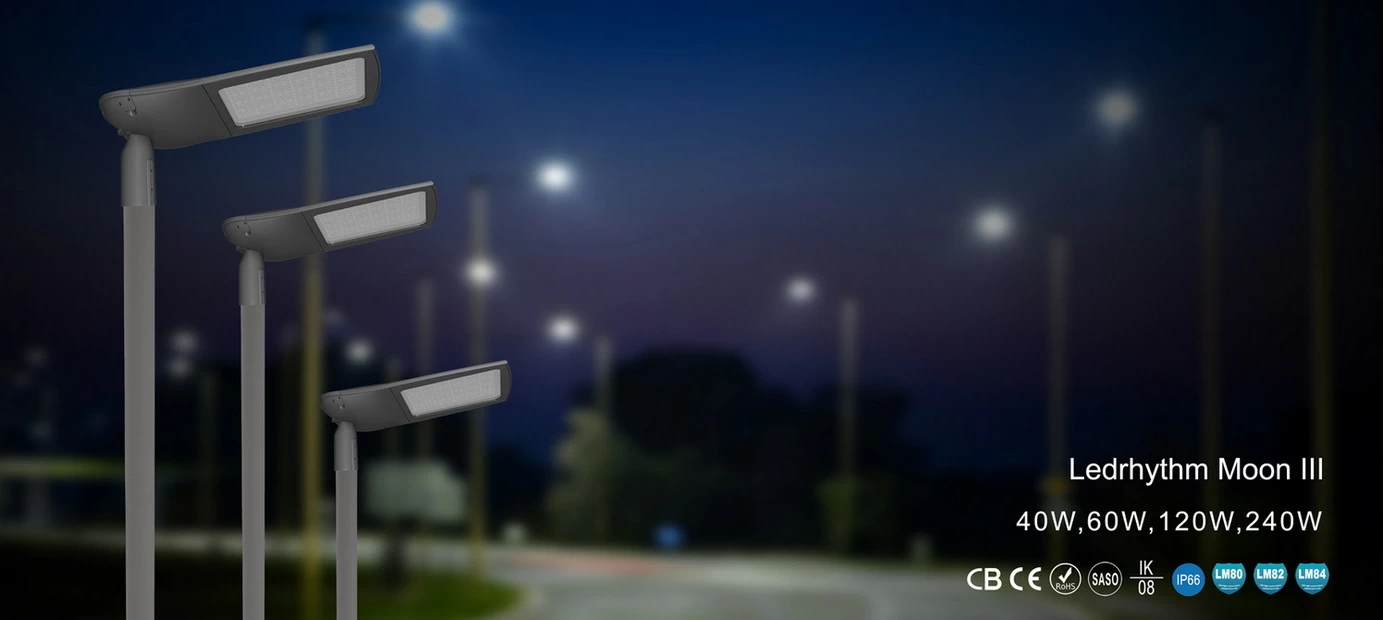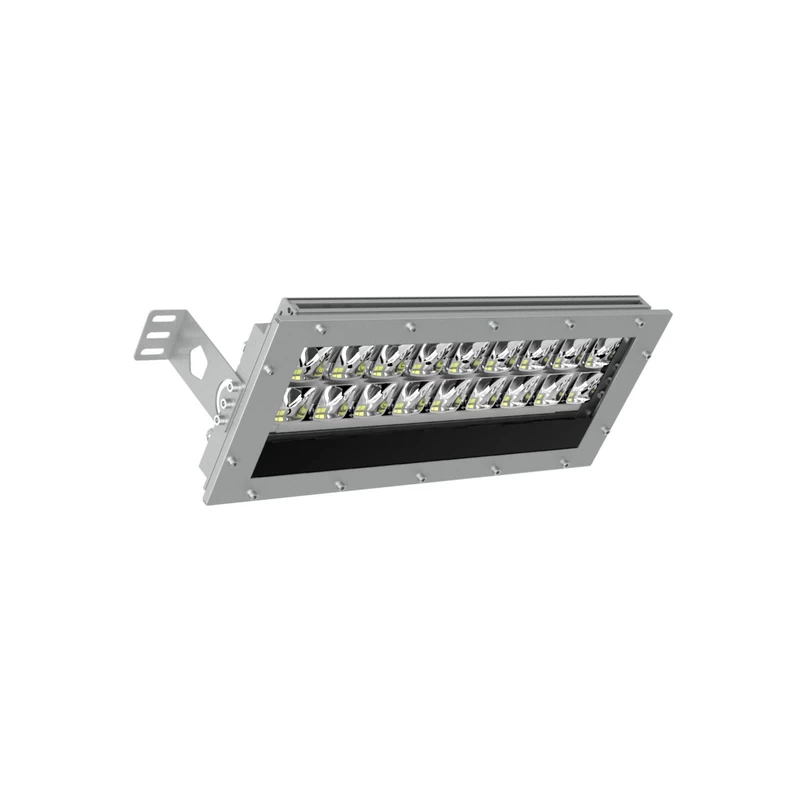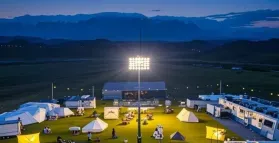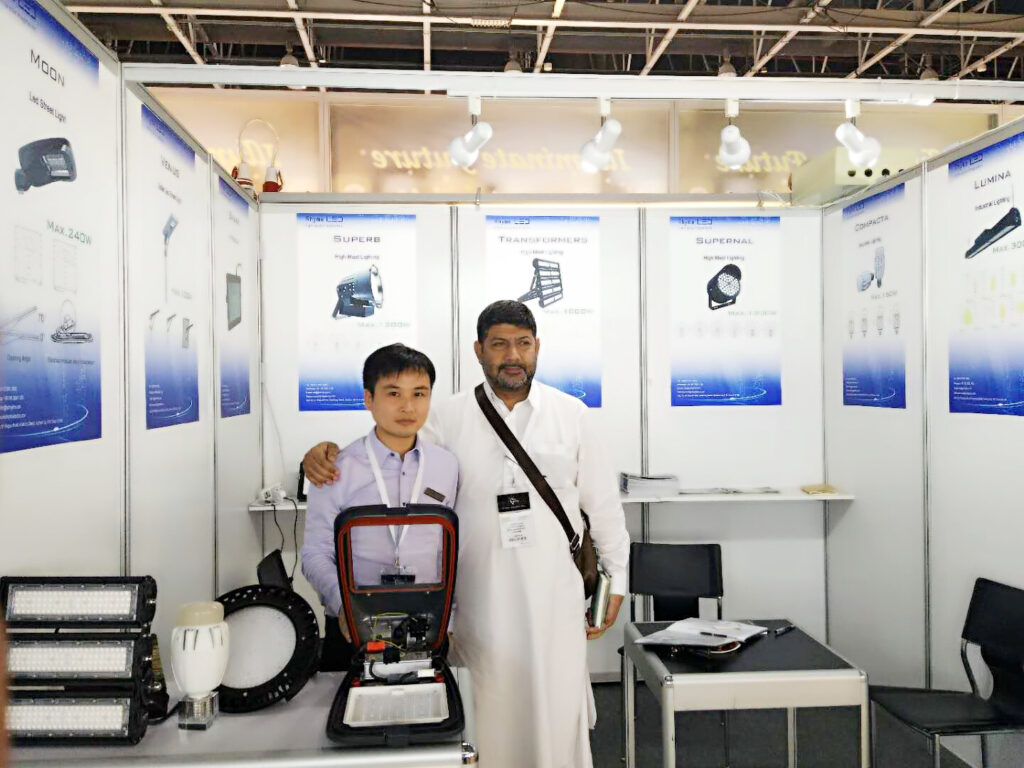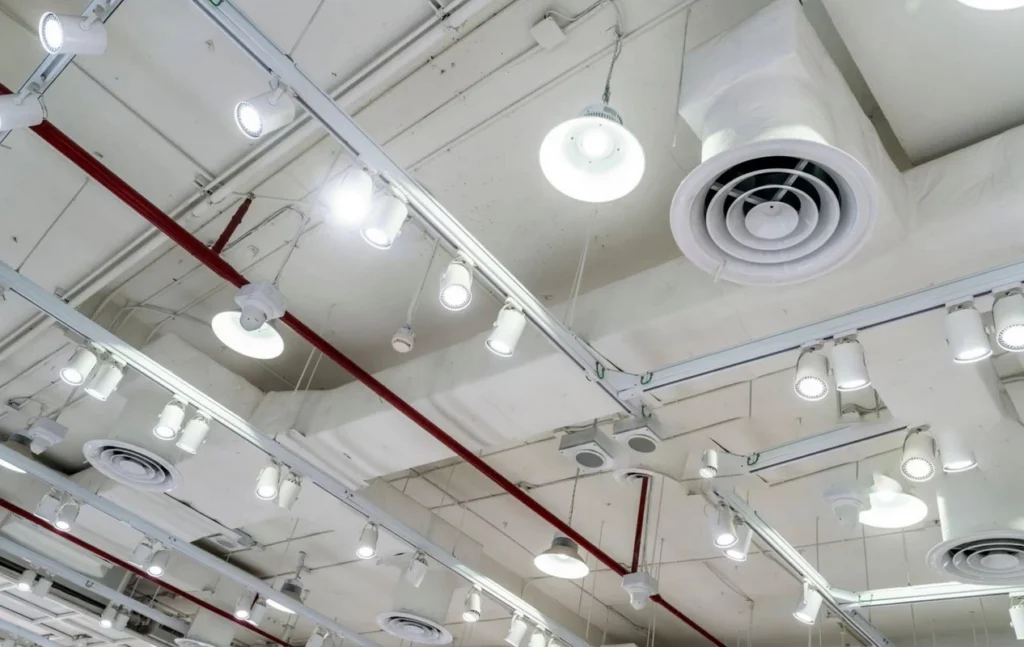Table of Contents
Toggle1. Are lights on streets important?
Street lights illuminate urban roads, highways, and some outdoor parking lots, and are very important for people’s safety and night travel. Modern LED street lights have basically replaced traditional street light bulbs, more energy-efficient and environmentally friendly. This chapter will detail the working principles, types, solutions, etc. of led street lights.
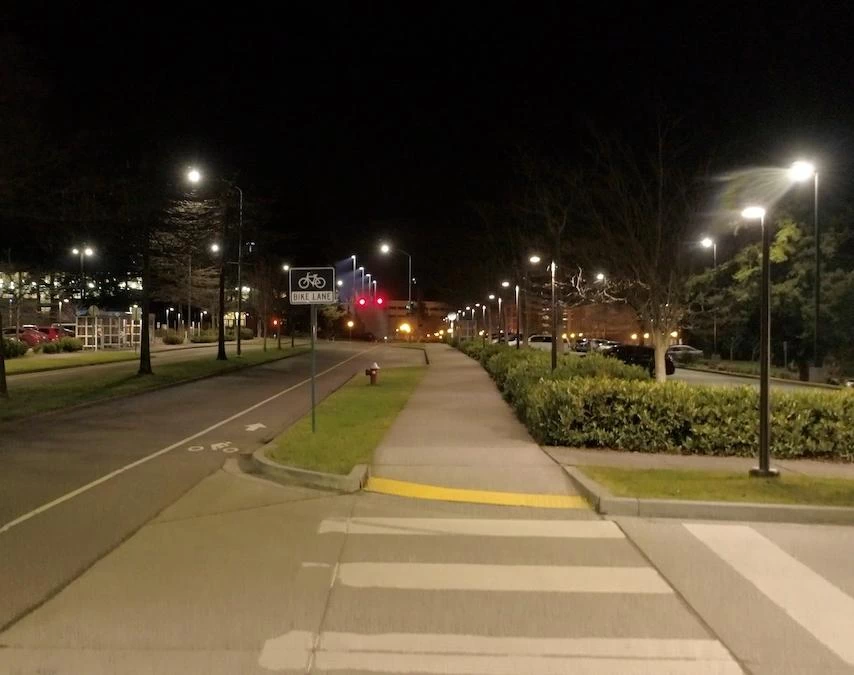
2. How Do Street Lamps Work
Traditional street lamps (such as high-pressure sodium lamps):
When current is passed into the street lamp, the ballast will generate high voltage electricity to break down the special gas (such as sodium vapor) in the lamp tube, and the gas discharge will generate ultraviolet rays, which will irradiate the phosphor coating on the inner wall of the lamp tube and eventually convert into visible yellow-orange light.
LED street lamps:
The current passes through the semiconductor chip (mainly made of materials such as gallium nitride), stimulating the movement of electrons inside the chip, and the electrons directly release visible light during the movement (no gas or phosphor conversion is required).
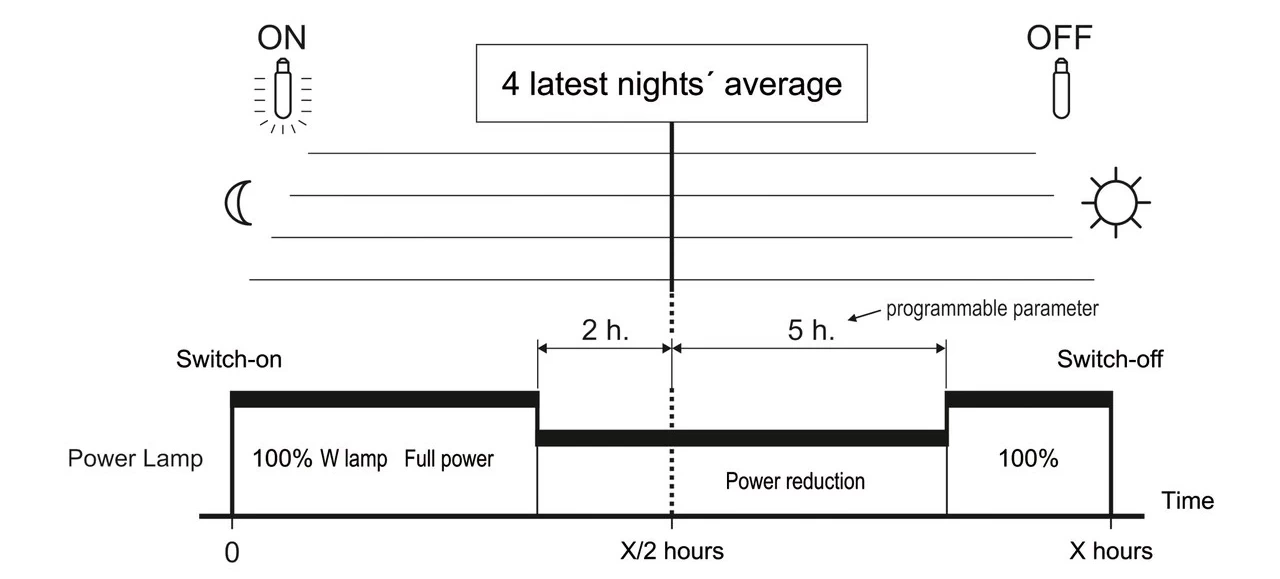
No manual operation is required for following reasons:
- Photosensitive control:
The street lamps have built-in photosensitive sensors that can automatically detect the ambient brightness – they light up immediately when it gets dark and turn off automatically when it gets light. - Intelligent timing system:
Some street lamps will be turned on and off in accordance with preset schedules (for example, they will turn on at 18:00 in winter and 19:00 in summer) or remote management platforms. - Manuals only participate in maintenance:
Daily operation is completely automated, and manual intervention is only required for fault repair or special needs (such as adjusting the lighting time during holidays).
💡 Traditional street lights “activate the gas in the lamp tube to emit light when power is turned on”, while LED street lights “stimulate the chip to emit light directly when power is turned on”. The switch is automatically sensed by ambient light and no human intervention is required throughout the process.
3. Types of Street Lamps

LED + intelligent control has become the global mainstream, accounting for more than 90% of newly installed street lamps, and LED will be the first choice for street lamp replacement. At the same time, solar LED is also rapidly popularizing in Africa and Southeast Asia; traditional lamps are only retained in old streets and special scenes.
High-pressure sodium lamp (HPS) street light
- Principle: The current excites the sodium vapor to discharge and emit yellow-orange light.
- Features: Strong penetration (suitable for rainy and foggy days), low cost, but high energy consumption and poor color rendering (distorted color of objects).
- Current situation: Gradually eliminated, only existing in some old sections of roads.

Metal halide lamp (MH) street light
- Principle: Mercury + metal halide gas discharge, emitting white light.
- Features: Good color rendering, once used in squares and stadiums, but short life (about 8,000 hours).
LED street light
- Principle: Semiconductor chip directly emits light.
- Features: Energy saving (saving more than 50% of electricity than sodium lamp), long life (50,000-100,000 hours), dimmable/color change (such as cold white light → warm white light).
- Integrated LED: One-piece design, low maintenance cost.
- Modular LED: Individual lamp beads can be replaced independently.

Solar street light
- Structure: photovoltaic panel + battery + LED light source.
- Advantages: No wiring required, suitable for remote areas.
- Limitations: Limited battery life on rainy days, low brightness.
Smart street light
- Function: automatic dimming, adjust brightness according to traffic/people flow; remote monitoring, fault alarm, energy consumption statistics.
- Integrated Wi-Fi, camera, environmental sensor (PM2.5/noise monitoring).
- It is a smart city “multi-pole-in-one” street light.
| Type | Application Scenario | Advantages | Disadvantages |
|---|---|---|---|
| High-Pressure Sodium Light | Old urban areas, foggy and rainy zones | Strong penetration | High energy consumption, poor color rendering |
| LED Street Light | Main urban roads, residential areas | Energy saving, long lifespan, smart controllable | High initial cost |
| Solar Street Light | Rural areas, parks, off-grid regions | No electricity bills, flexible installation | Affected by weather |
| Smart Street Light | Commercial zones, smart parks | Multifunction integration, efficient management | High cost, complex maintenance |
4. Lights on Streets Application
The application scenarios of street lights are actually very particular. For example, the lighting standards for city roads and highways are completely different: the former must consider pedestrian safety and require uniform and soft lighting; the latter emphasizes high penetration and anti-glare. Intersections are even more special, as they must take into account vehicles coming from multiple directions and solve the problem of signal light interference.
City Roads & Residential Roads
City roads are mainly responsible for safety lighting, pedestrians/vehicles can see road obstacles clearly, and require bright and uniform street lights.
Street lights in residential areas should have soft light to avoid glare that disturbs residents.
- Solution:
Warm white LED (3000K-4000K color temperature) is used as the mainstream, with a color rendering index of >70. - Street light height:
Residential area: staggered lighting on one side, lamp pole height 6-8 meters, spacing 20-30 meters.
City road: symmetrical lighting on both sides, lamp pole height 8-10 meters. - Intelligent control:
Automatically dimming to 30% brightness at night.
Voice control/radar sensing of pedestrian and vehicle flow.
Highways & Main Roads
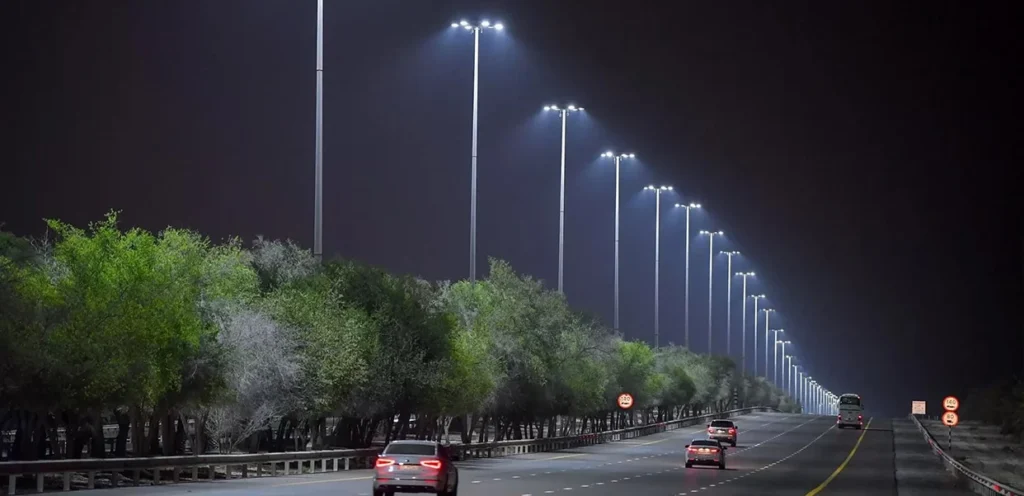
Highways have high speeds and a large number of vehicles, so brighter lamps are needed. Not only does it have high penetration, it can also provide uniform lighting on long-distance highways.
High-power LED street lights (>150W) are preferred, with high protection levels, and can easily cope with the vibrations caused by bad weather and large vehicles passing by.
Street light height ≥ 12 meters, spacing 30-50 meters (brightness maintained at 20-30 lux)
Intersections and Junctions
We should ensure that there is no blind spot lighting, eliminate vehicle blind spots, and avoid confusion with signal lights, so as to maximize the driver’s ability to respond to emergencies.
- Solution:
Main light (high pole top light) covers the whole area
Auxiliary light (low side light) makes up for the shadows at corners - Color temperature control:
Use 5000K cold white light to create a color difference with the signal light (red/yellow/green) - Intelligent:
Connect to traffic cameras and automatically increase the brightness by 30% during peak traffic hours
Comparison table of typical scene lighting parameters
| Scenario | Illuminance Standard (lux) | Color Temperature (K) | Color Rendering Index (Ra) | Pole Height |
|---|---|---|---|---|
| Residential Walkways | 5–10 | 3000–4000 | ≥70 | 6–8 meters |
| Urban Roads / City Streets | 10–20 | 3000–4500 | ≥70 | 8–10 meters |
| Highways | 20–30 | 4000–5000 | ≥60 | ≥12 meters |
| Commercial Plazas | 50–100 | 4000–5700 | ≥80 | 8–12 meters |
5. Advantages of Modern LED Street Lights
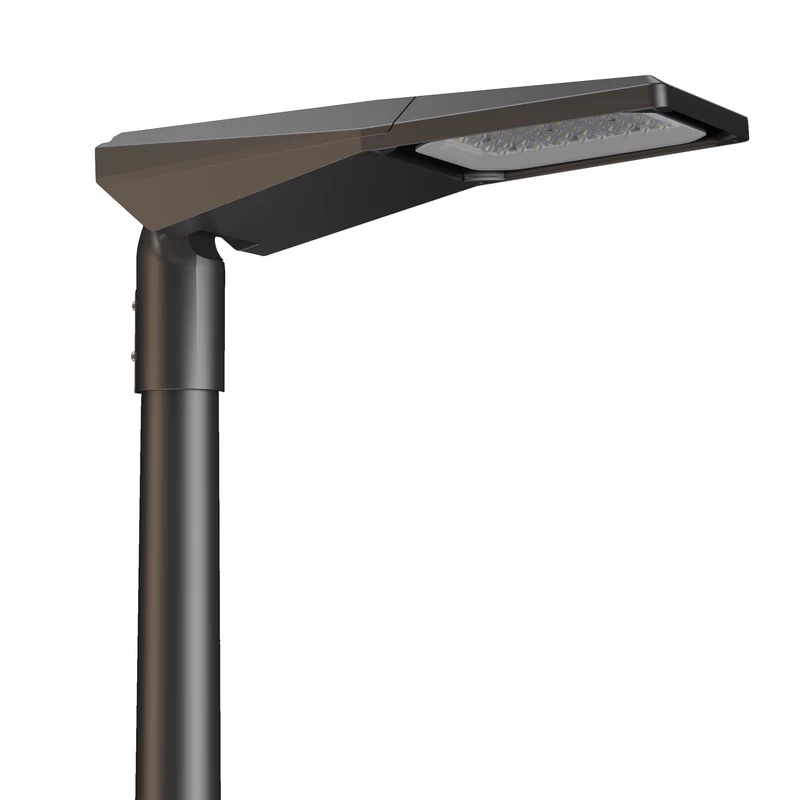
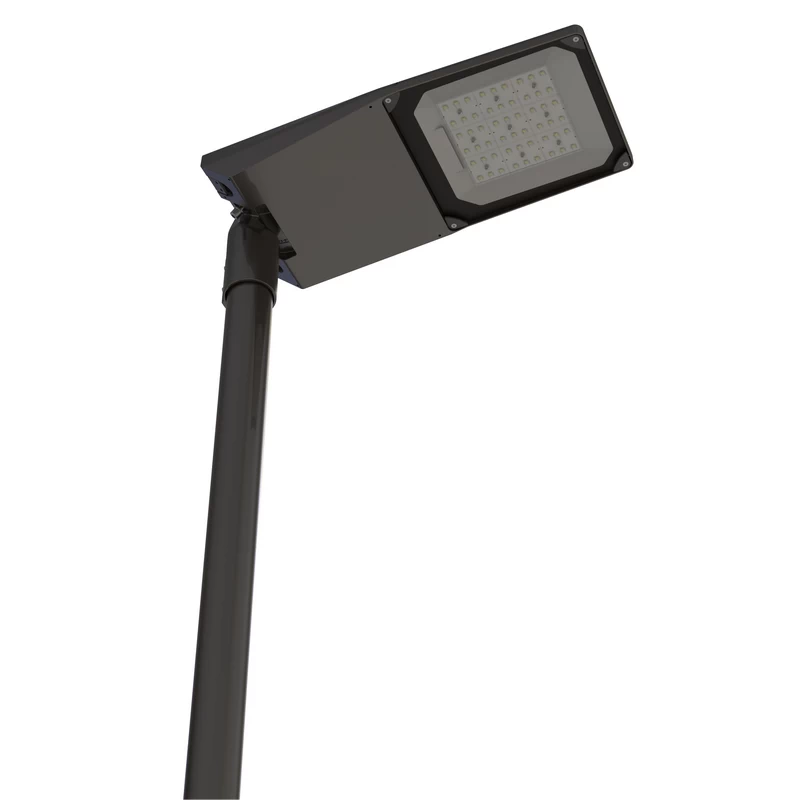
Ultra-high light efficiency
Photoelectric conversion efficiency> 150 lm/W, power utilization rate up to 90% (traditional light sources are only 40%), power consumption reduced by 50%-70% at the same brightness.
Directional light design: 120° precise light distribution, reducing sky scattering waste, and increasing effective road light by more than 30%.
Ultra-long life, low maintenance
Lifespan is 50,000-100,000 hours (about 10-20 years), which is 3-5 times that of traditional light sources.
Modular structure: A single lamp bead can be replaced independently when damaged, without the need to scrap the entire lamp, reducing maintenance costs by 60%.
Intelligent control, flexible management
Stepless dimming: supports continuous brightness adjustment from 0 to 100%, and automatically reduces voltage to save energy at night (such as running at 30% brightness).
Remote centralized control: batch switching, fault monitoring, and energy consumption statistics through PLC/LoRa wireless network.
Environmental response: linked to radar/light sensor, brightens when people and vehicles approach, and returns to dim light after leaving.
Light quality upgrade, safety guarantee
High color rendering index (Ra>80): object color is truly restored, improving monitoring recognition accuracy.
No flicker design: stable current output, eliminating the risk of eye fatigue.
Precise light distribution: bat-wing optical lens, avoiding driver glare, road brightness uniformity>0.6.
Green and environmentally friendly, strong adaptability
Zero-pollution materials: does not contain toxic substances such as mercury and lead, and the waste recycling rate is >95%.
Low temperature adaptability: works in the full temperature range of -40℃ to +60℃, without startup delay.
A single 100W LED street light saves about 500 kWh of electricity per year. Every 10,000 street lights reduces carbon emissions by ≈2,500 tons per year.
Request a Quote – Contact our sales team to learn how switching to LED street lighting can save costs and improve lights on streets.
6. Street Light Cost
Initial investment cost (100W street light)
| Item | Cost Range (CNY) | Approx. in USD | Description |
|---|---|---|---|
| LED Lamp Head | ¥600 – ¥1,200 / unit | $84 – $168 | Brand and smart features (dimming / monitoring) affect pricing |
| Pole & Installation | ¥1,500 – ¥3,000 / unit | $210 – $420 | Height and material (steel/aluminum) determine cost |
| Smart System | ¥200 – ¥800 / unit (optional) | $28 – $112 | Includes sensors, communication modules, etc. |
| Total per Light | ¥2,300 – ¥5,000 | $322 – $700 | Traditional sodium lamp initial cost is approx. ¥1,000 – ¥2,000 ($140 – $280) |
💡 The initial cost of LED street lights is 30%-100% higher than traditional lamps, but the subsequent return is premium.
LED chip prices have dropped by 70% in the past five years, and city-level renovation projects have reduced the cost of a single lamp by 15%-20%.
Single LED reduces carbon emissions by ≈0.5 tons per year, based on a carbon price of ¥60/ton → annual income of ¥30/lamp.
The total cost of LED street lamps in 10 years is 38% lower than that of traditional lamps
7. Choosing a Trusted LED Street Lamp Manufacturers And Supplier
Cooperating with experienced LED street light manufacturers/suppliers ensures quality products and reliable services. As well as one-stop solutions and complete after-sales, your lights on streets are worry-free.
We are professional in LED lighting
We have an experienced LED street light R&D team. Our products are exported to all over the world and meet international certifications.
Service and Support
In addition to providing lights, we also provide professional lighting design and strong after-sales service. This means we help you plan the lighting layout, optimize costs and ensure that the installation process goes smoothly.
Our LED lights on streets series
We have a variety of LED street light products to meet various needs. The power covers 50-300W, and each lamp has a high light efficiency of 150lm/W, IP66 protection, and ultra-long life.
Contact us to customize your lights on streets solution
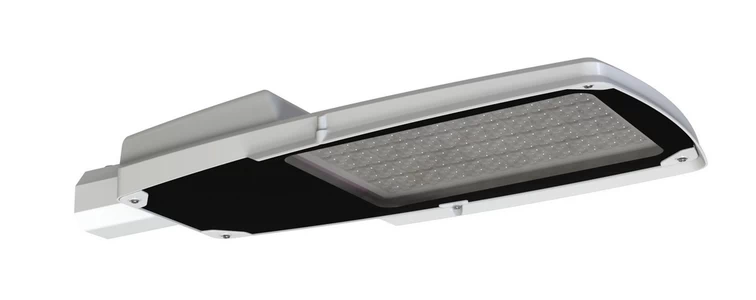
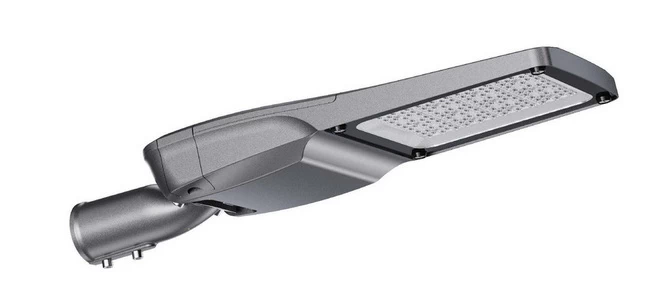
8. Conclusion
Modern street lights have become smarter, bringing safer, more environmentally friendly and more energy-efficient lighting to the streets. Knowing these designs, types and costs, you can better choose manufacturers.
As a leading LED street light manufacturer, our advanced technology and customized services give you the best lights on streets
9. People Also Ask
What should street light modern have?
- LED light source – high-efficiency chip module (mainstream 100-200W), life span over 50,000 hours;
- Intelligent drive power supply – converts AC power into stable DC, supports dimming (such as 0-10V/PWM protocol);
- Cooling system – aluminum fins + thermal conductive silicone grease, control chip temperature <85℃;
- Optical lens – asymmetric bat-wing light distribution, avoid glare and evenly cover the road surface;
- Automatic control system – standard light sensor (automatic switch), optional radar/timing module (brightness adjustment on demand);
- Protective structure – dustproof and waterproof shell above IP65, adaptable to -30℃ to +45℃ environment.
How long does take to recover cost replacing LED street lights?
The cost recovery period for replacing traditional street lights with LED street lights is usually 2-4 years. The actual recovery speed is affected by the local electricity price (the higher the price, the faster the payback) and the average daily lighting time.
(If the government energy-saving subsidy is obtained, the payback period can be shortened to 1.5-3 years)
Are LED street lights recyclable?
Yes, LED street lights are highly recyclable, mainly reflected in:
- Metal parts recycling rate> 95% – aluminum radiators, lamp poles and steel components can be directly smelted and reused;
- Electronic components classification and processing – the circuit board (containing copper/gold) of the driving power supply is purified and recycled, and the chip substrate (ceramic/aluminum) is crushed and recycled;
- Environmentally friendly material recycling – PC plastic lenses are crushed to make new lamps, and rare earth elements (yttrium, europium) in fluorescent powder can be extracted and reused;
- Harmless treatment – does not contain toxic substances such as mercury/lead, and there is no pollution risk when discarded.

